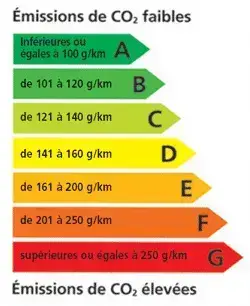
Which applications consume the most today?
Buy applications that consume less on the Softcorner marketplace, the number 1 in second-hand perpetual licenses.
Information and communication technologies (ICT) are major CO2 emitters and contribute significantly to global warming. Even though new technologies are presented as the solution to reduce digital pollution from many activities through innovation and evolving usage (remote work, digitization of processes, collaborative work…), the current lifecycle of IT hardware and software is far from virtuous. It includes the manufacturing of terminals, screens, smartphones… (which heavily consume natural resources), transportation and distribution (major GHG emitters), usage (consumer of technological resources and energy), and end-of-life (with a very insufficient recycling rate for various IT equipment).
Considering only the impact of production and usage, digital represents between 5 and 7% of global GHG emissions. Internet infrastructures (data centers, networks, and user terminals) account for about 4% of global energy consumption and are expected to double by 2025. Regarding usage, electricity needs are also linked to the IT applications hosted by servers and terminals. According to a 2018 WWF study, the environmental impact of the client environment is also significant, with software that strains processors and manages memory, network, and storage space, knowing that each use of resources induces power consumption. Depending on the nature of the equipment (user terminal or server), studies have identified the applications that consume the most.
The most power-hungry applications on mobile devices
The power consumption of applications installed on Android or IOS phones has a measurable impact on battery autonomy and usage time between charges. According to a study conducted by Greenspector and Atos in 2019, the most data and energy-consuming applications are primarily web browsers and social networks, with Tik Tok, Twitter, Opera Mini, Firefox, Google leading the way… The GPS left active in the background also consumes a lot of energy due to the generated flows and real-time data updates.
The Greenspector and Atos study also highlights video conferencing applications (Imo, Skype…) and online messaging apps like Messenger (Facebook) or Message (Google) as being significant energy consumers. Multimedia applications like Office 365 and management and email clients such as Microsoft Outlook or Gmail also consume a lot of energy.
The most power-hungry applications on desktops
The energy consumption of a desktop is not the same as that of a mobile terminal, but its usage still has an ecological footprint related to its use and applications. Regarding software, professional social networks, video conferencing tools (Discord, Zoom, and Microsoft Teams), email clients (Microsoft Outlook, Gmail), and multimedia office and management solutions are very energy-hungry.
Presented as energy-saving vectors, SaaS solutions are much less so when considering all the necessary links in the chain for their proper functioning. The Office 365 office solution (including Word, Excel, PowerPoint, Outlook applications… and online services like OneDrive, Exchange Online, SharePoint Online…) requires an Internet connection to enjoy all its collaborative services. Although it is possible to use Word, Excel… applications offline, the principle of this SaaS solution is to be connected to the Internet to access all services (updates, security, storage, sharing…). This technology involves all levels of the connected digital chain from the client workstation, data and telecom networks, and data centers hosting servers and data storage arrays.
The server and workstation operating systems should also be scrutinized because, depending on the version used, there can be overconsumption of energy during boot phases (activation of all processes and functionalities, checking proper operation with connected peripherals…) and during operational phases. Studies by GreenIT, for example, show that Windows 10 associated with Office 2019 needs 171 times more resources than the Windows 98 and Office 97 duo.
Solutions for reducing your digital devices' energy consumption
Adopting a more eco-responsible strategy based on digital sobriety, by reducing the ecological footprint of infrastructure deployed in your company and equipping various terminals with applications that consume less, can contribute to lowering ICT energy consumption. As we have seen, connected applications like Office 365 consume the most energy. By favoring the use of second-hand on-premise applications, you maintain control over the energy consumption of your client stations and limit their consumption to local usage. You also avoid regular updates from publishers that force you to upgrade your infrastructure without providing functional gains relative to your users' needs.
By relying on the previous example, you will reduce digital power consumption in your company by purchasing licenses for Windows 98, Office 97, and any other on-premise production applications for your employees. Besides second-hand licenses that allow you to extend the life of applications, you have other levers to limit the impact of applications that consume, such as generalizing best practices in email management, data volume saved…
By connecting to the Softcorner platform, you can find applications that consume less and buy second-hand licenses using intelligent search tools. They will allow you to be both eco-responsible and efficient while participating in a circular economy.
Autres Resource
See all
SNCF's Experience Feedback
“With Softcorner, you are guaranteed that the licenses offered are completely valid and of high quality.”
See more
Used Software Licensing in CAPEX Mode
The differences between CAPEX and OPEX CAPEX and OPEX are two concepts related to how expenses made...
See more
Guide to Buying and Selling Used Software
Why buy used software? Equipping with new software represents a significant cost for...
See more
Legacy Governance: The Alternative Offered by the Secondary Market
It is difficult for companies to constantly invest in the latest software versions. As a consequence,...
See more